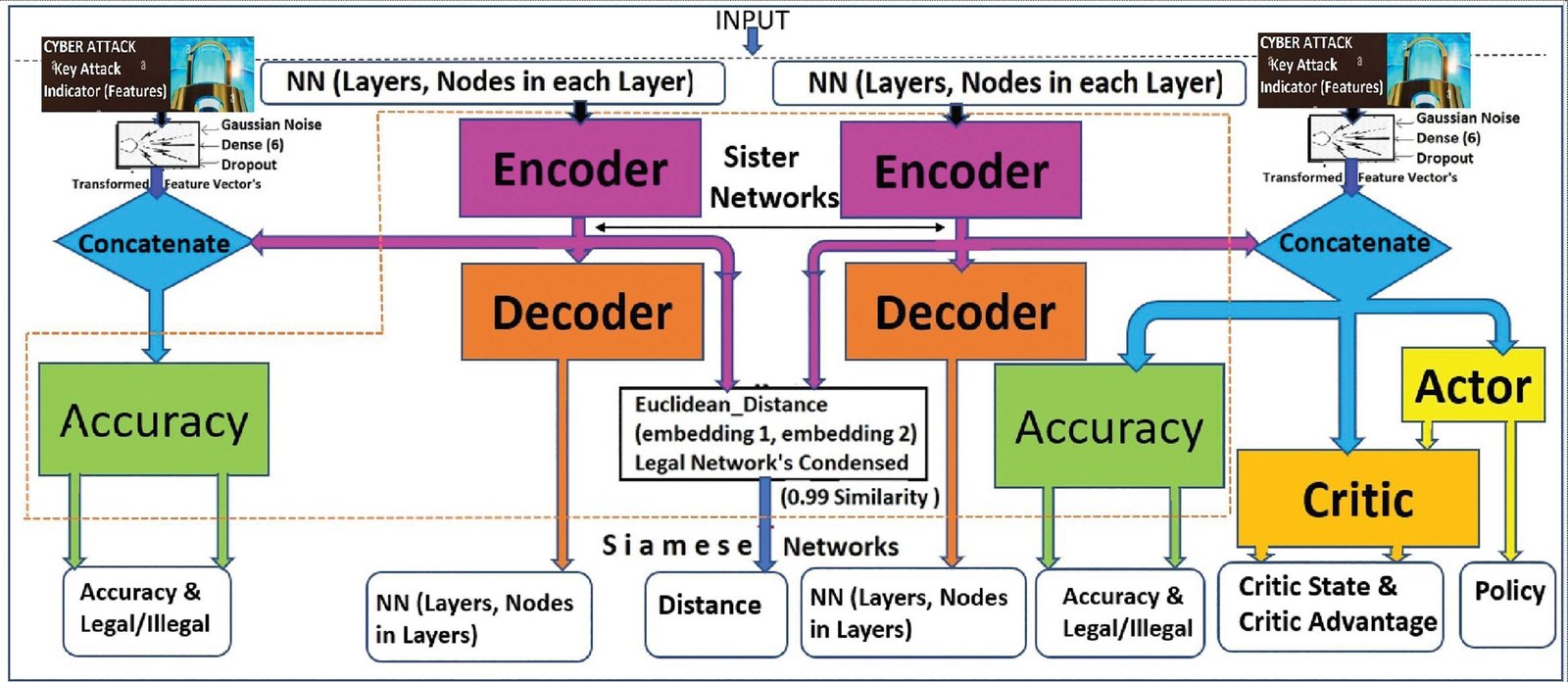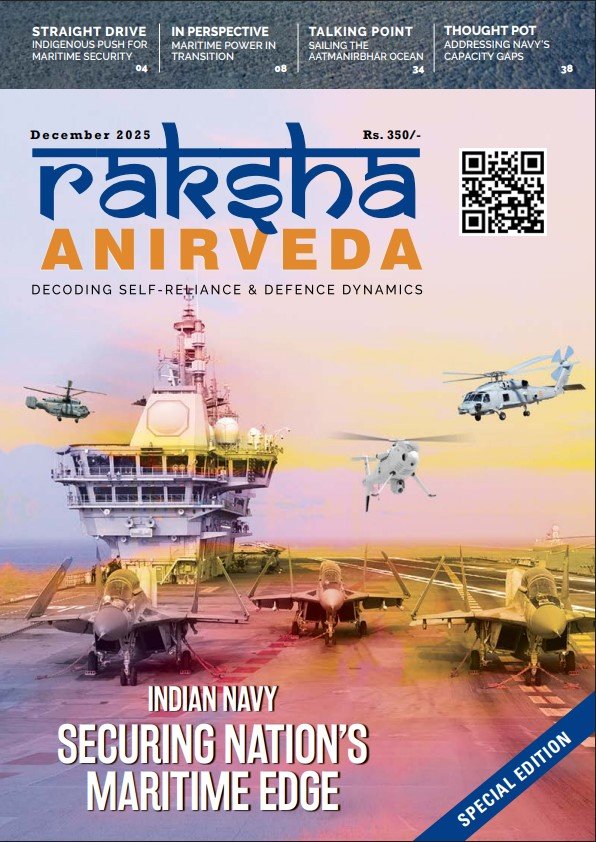In today’s rapidly shifting geopolitical landscape, traditional defence paradigms are crumbling under the weight of hybrid threats and relentless digital offensives. From autonomous drone swarms to precision-guided cyber intrusions, the theater of war is now dictated as much by code as by combat.
Nations worldwide—from the US and Israel to China, Iran, Ukraine, Pakistan, and India—are embracing this transformation, not merely to defend but to dominate. At its core lies the convergence of Artificial Intelligence (AI), Robotics, Quantum Technologies, and most critically, Reinforcement Learning (RL)-driven cyber resilience frameworks.
As part of my recent research at George Washington University, I developed a Cyber Resilience system integrating Reinforcement Learning, adaptive neural architecture search, and real-time threat modelling. The accompanying diagram and technical narrative reflect key innovations from that work, serving as a case study for how modern defence can leverage self-learning systems for proactive cybersecurity.
The AI-Driven Shift in Modern Warfare
AI is no longer a backend tool—it’s now vital to battlefield supremacy. For example, Israel’s Harop loitering munitions autonomously identify and destroy radar systems in urban combat. The US Department of Defence’s Project Maven classifies massive drone footage in real time, turning data into actionable insight. Ukraine, constrained by budget and terrain, has pioneered the use of FPV drones enhanced with machine learning for low-cost reconnaissance and kamikaze missions.
In South Asia, India’s Indrajaal system deploys real-time 360° sensor fusion and deep learning to neutralise UAV swarms autonomously. Bhargavastra, another Indian counter-UAS platform, incorporates Bayesian threat modelling and trajectory prediction to optimise kinetic interception. Meanwhile, China is developing swarms of micro-UAVs—referred to as “mosquito drones”—and long-range autonomous carrier drones like Jiu Tian, with AI-based mission flexibility.
Pakistan’s Shahpar II, though less sophisticated than its Indian counterparts, showcases AI-led ISR capabilities. India’s Rudrastra, a hybrid VTOL UAV, supports ISR, EW payloads, and kinetic engagement—highlighting a trend toward modular, intelligent, multi-role assets.
All these platforms compress the OODA (Observe–Orient–Decide–Act) loop from minutes to seconds, a critical edge in high-speed, multi-domain warfare.
In South Asia, India’s Indrajaal system deploys real-time 360° sensor fusion and deep learning to neutralise UAV swarms autonomously. Bhargavastra, another Indian counter-UAS platform, incorporates Bayesian threat modelling and trajectory prediction to optimise kinetic interception
Robotics and Distributed Autonomy
Autonomous robotics—both ground-based and aerial—are transforming how militaries operate in high-risk and high-altitude conditions. India deploys robotic mules and quadruped units near the Himalayas, enabled by SLAM and edge AI. These units can evacuate wounded soldiers or deliver ammunition in GPS-denied zones.

China’s legged robots are capable of similar logistics functions across complex terrain, integrated with video relays and autonomous path planning. Iran’s AI-enabled drones, such as the Shahed-136, combine swarm coordination and self-navigation for long-range attacks, and have reportedly been used by Russian forces in Ukraine. The newer Hadid-110 drone expands this capacity further.
India’s Nagastra-1, a tactical loitering munition, demonstrates EO/IR-guided autonomous targeting with a return-to-base feature. It mirrors concepts seen in Israel’s Hero-series drones, which offer operator override alongside autonomous engagement for precision targeting.
Quantum Technologies: Securing the Digital Battlefield
As cyber and electronic warfare intensify, quantum systems are reshaping military communications, navigation, and surveillance. In India, the DRDO–IIT Delhi demonstration of Quantum Key Distribution (QKD) over 1 km of free space represents a breakthrough in tamper-proof, quantum-resilient communications.
These technologies mirror efforts by China, which has already launched quantum satellites and deployed QKD links in strategic cities. The US and NATO allies are investing in quantum radars, optically pumped magnetometers, and Quantum Inertial Navigation Systems (Q-INS) to counter stealth and GPS-denied threats. Russia is developing similar capabilities as part of its new-generation EW arsenal.

India’s Quantum Technology Research Centre (QTRC) is working on battlefield synchronisation via atomic clocks, which can maintain coordinated multi-domain operations even under heavy EW conditions.
While kinetic threats grab headlines, cyberspace remains the most contested and fastest-evolving domain. Static detection systems quickly become obsolete. In contrast, RL-based frameworks adapt dynamically to changing threat landscapes, evolving without the need for manual retraining
Reinforcement Learning: The New Cyber Sentinel
While kinetic threats grab headlines, cyberspace remains the most contested and fastest-evolving domain. Static detection systems quickly become obsolete. In contrast, RL-based frameworks adapt dynamically to changing threat landscapes, evolving without the need for manual retraining.
Drawing from my doctoral research at George Washington University, I developed an RL-guided architecture optimisation system for cyber resilience. It automatically generates and refines neural network configurations optimised for real-time threat detection and classification.
A self-optimising AI framework using Encoder-Decoder networks, Accuracy modules, Siamese embedding comparison, and Actor-Critic policy optimisation. The Critic refines policy for real-time threat response, enabling dynamic adaptation to novel cyber-attacks.

The system includes:
- Encoder to translate network and attack descriptions into an embedding space.
- Accuracy Model to predict classification efficacy.
- Actor-Critic Networks, guided by the Bellman Equation, to explore better architectures.
- A Siamese Network for structural consistency across attack classes.
- Noise-augmented vector training for better generalisation under diverse attack profiles.
Trained on public datasets (Kaggle’s DDoS, malware, and APT logs), this system generalises across novel attacks without overfitting. In simulation environments, it achieves high detection accuracy with significantly reduced retraining.
Real-World Deployments and Cyber Resilience
Ukraine’s cybersecurity units use RL-enhanced filters to suppress botnets and identify ransomware signatures in real time. Iran has employed adversarial AI in psychological warfare—including deepfake generation—but faces growing resistance from RL-empowered defence systems.
The US, through programs like DARPA’s GARD (Guaranteeing AI Robustness Against Deception), is exploring RL-based tools to safeguard military networks. Israel, meanwhile, incorporates RL into its cyber units for proactive threat hunting and zero-day exploit detection.
Pakistan and India, often targeted by cross-border cyber operations, are working to build multi-modal RL-based cyber defence capabilities—sharing threat intelligence and training on mirrored attack datasets.
The Kill Web Doctrine: Real-Time Autonomous Orchestration
The future of warfare lies in Kill Webs—a concept where AI-guided drones, RL-optimised cyber shields, quantum-secure communications, and robotics operate as a synchronised, multi-domain grid.
In one example, UAVs detect incoming hostiles; AI systems classify and prioritise them; QKD-encrypted data is relayed to a central node; Nagastra or Rudrastra loitering munitions are deployed; and RL cyber systems respond to concurrent malware attacks—all within 90 seconds.

Such a lattice—combining autonomy, convergence, and speed—compresses the OODA loop and vastly improves survivability.
Doctrinal, Ethical, and Sovereignty Challenges
With these breakthroughs come hard questions. India’s Digital Battlefield Doctrine (2026) is under review to regulate autonomous engagement and AI usage. The US DoD continues to balance innovation with ethical oversight through its Responsible AI Guidelines. NATO and Israel both advocate for bounded autonomy in kinetic applications.
Tech sovereignty remains a challenge. From quantum-grade chips to AI model training pipelines, indigenous capacity is essential to avoid strategic dependencies. China’s chip autonomy push and India’s Make in India Quantum initiative signal a global race for trusted infrastructure.
Tech sovereignty remains a challenge. From quantum-grade chips to AI model training pipelines, indigenous capacity is essential to avoid strategic dependencies. China’s chip autonomy push and India’s Make in India Quantum initiative signal a global race for trusted infrastructure
Speed, Adaptability, and Intelligence
Overall, modern warfare is not a contest of numbers but of intelligence, adaptability, and algorithmic superiority. AI enables faster decisions. Robotics extends physical reach. Quantum safeguards communication and sensing. And RL allows cyber systems to evolve continuously.
The cyber resilience architecture I developed at George Washington University—an integration of Reinforcement Learning, neural architecture search, and threat-aware training—offers a blueprint for nations to protect and project power in the digital battlespace.
As militaries embrace this shift, the victors of future conflicts will not be those with the largest arsenals, but those who can learn, adapt, and strike with the most precision and speed.







